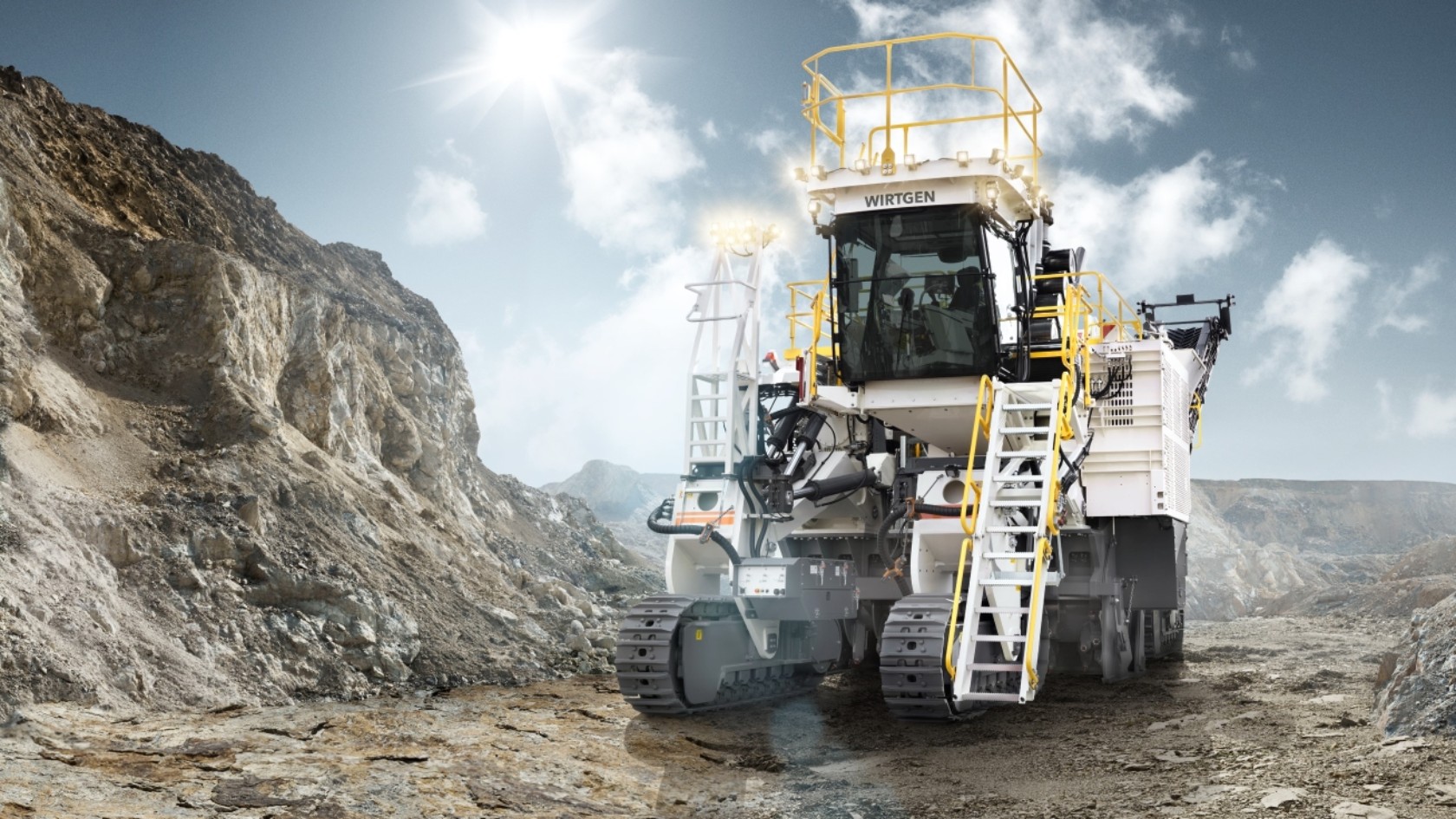

Surface Mining: Selective mining of pay minerals
Deposit material and mineral raw material are used for a whole variety of purposes, as a basis for construction or as a source of energy. But how are they mined? Which methods allow rock of every kind to be mined selectively and cost-efficiently?
Drilling and blasting in mining, earthwork and rock operations are, quite simply, no longer “state of the art”. Surface mining offers a far more economically efficient and environmentally friendly solution, as it is capable of cutting, crushing and loading rock in one single working pass.
One of the most important features of the WIRTGEN Surface Miners is their ability to load the cut material directly onto trucks.
The 2500 SM and 4200 SM, are rear loaders, their discharge conveyor being mounted at the rear of the machine. The conveyor can be slewed about 90 degrees to either side and the discharge height adjusted as required. The operator of the Surface Miner can swivel his seat to the right or left to ensure that he has a clear view of the truck.
When the cut material is deposited in windrows, it is deposited directly behind the machine without using the conveyor. This means the cutting process can be carried out separately from the loading process (onto a truck). The material does need to be reloaded using a front loader, however.
In many applications, the higher productivity of the windrowing method compared to direct loading compensates for the additional cost of reloading the material (e.g. with wheel loaders).In addition, this method does not cause any wear and tear to the conveyor belts and eliminates the cost of operating the conveyor system.
Sidecasting refers to the process of creating a pile by dumping the material from various cutting operations onto the pile via the conveyor. Depending on the slewing angle of the belt, the material from 3 to 5 adjacent cutting paths can be dumped on top of each other. Depending on the height of the resulting pile, the material can be easily reloaded with a front loader.
The innovative process considerably reduces the amount of equipment, personnel, and time required compared to conventional methods. At the same time, flat, stable surfaces and embankments can be created and different layers of rock can be extracted selectively. But that's not all - since this process is vibration-free and produces little dust and noise, it allows minerals to be mined effectively right up close to residential areas and roads.
Benefits
The crushed material is so small that it can be processed profitably with little or no subsequent processing. Mining bauxite, phosphate, kimberlite, or salt can become increasingly profitable and even hard limestone or granite rock up to 260 MPa can be surface mined without blasting.












